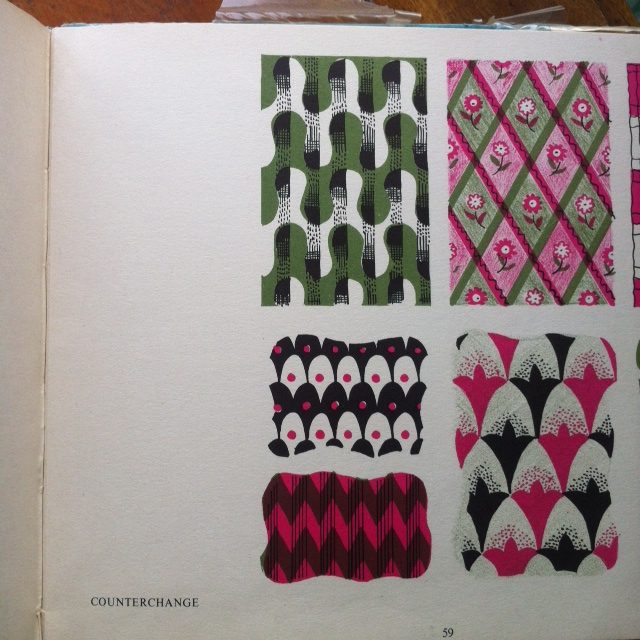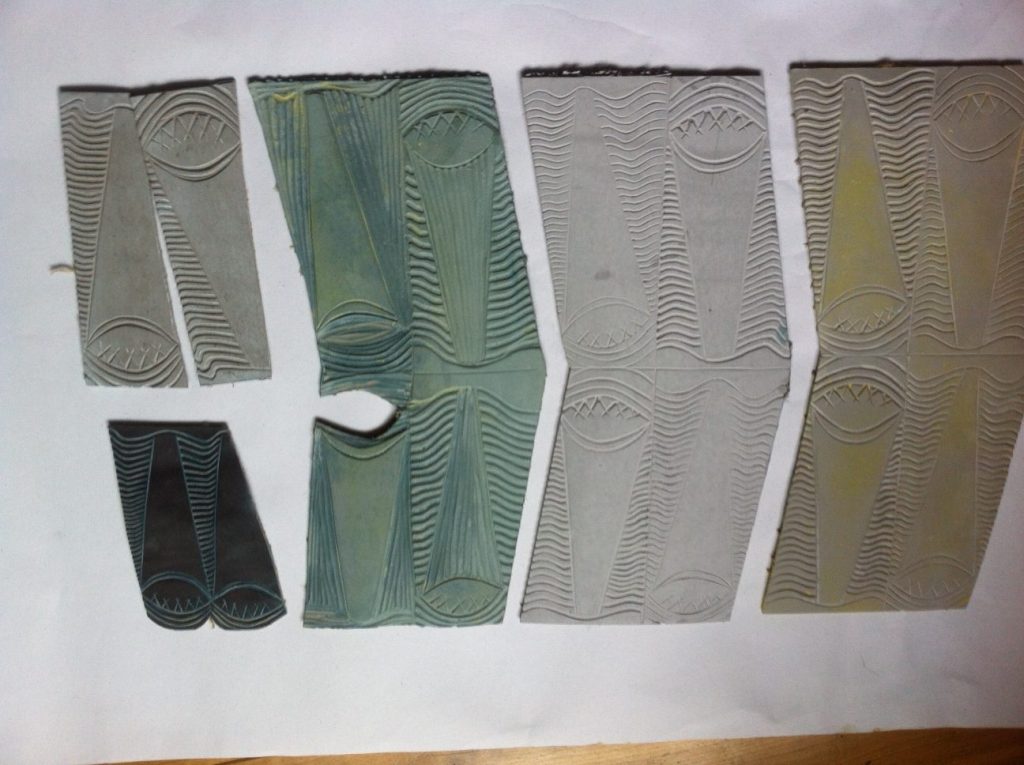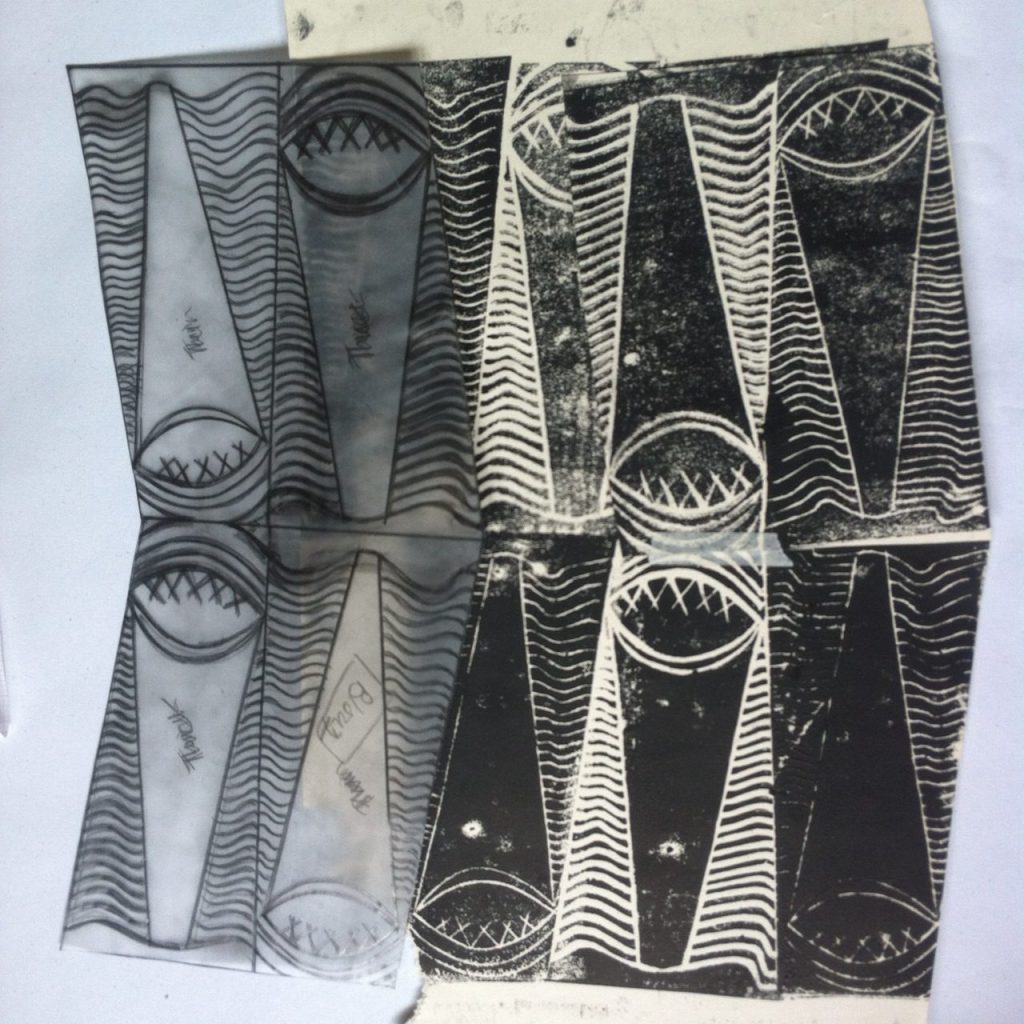Pattern making
Each time I come to design a pattern, I am overtaken by an overwhelming desire to discover the hidden order that will transform this random assemblage of marks and lines into a living whole that will dance it’s way off the fabric – it gets kind of obsessive and I find it very hard to do anything else except pursue this elusive harmony.
There is a rational way to design a pattern – I remember Orla Kiely suggesting that you first consider the purpose of the design, then the scale and lastly the motif itself. I’ve also got lots of lovely books about the subject, which I could use but rarely do.
Instead, I kind of feel my way out of the dark: for me pattern grows out of a moment in a specific emotional time and place – I’ve often used similar inspiration and yet come up with completely different design ideas that bare little resemblance to each other.
I’ve learnt that by my personal approach is through printmaking itself: cutting and printing and recutting my printing blocks – moving them, rotating them, cutting them up untilI find a little clue of something that intrigues me and offers possible solutions… I’ve also learned from some of my favourite pattern makers like Barron and Larcher and Enid Marx to always shape my repeat unit (never square) and to overlap, reverse and flip patterns – what ever it takes to keep them dynamic and above all to keep off the train tracks. When I think I’m almost done, I look at every line and ask why it’s there – always a good way of simplifying.
Here’s some of the earlier incarnations of the Sompting design that I designed for the Virginia White Collection. This two colour design took me a while and in the end I just cut the block up and collaged the whole thing – messy. I remember coming in from the garage and showing David the final print, knowing that I’d finally cracked it – always a lovely feeling…
The strange thing is that each time, instead of knowing what to do I have to go through the whole strange and elusive process again, experimenting, developing, refining – with no shortcuts or tricks. It’s such an all consuming process that I remember what Sheila Paine says in the introduction to her book on Embroidered Textiles and quietly apologise to my boys:













